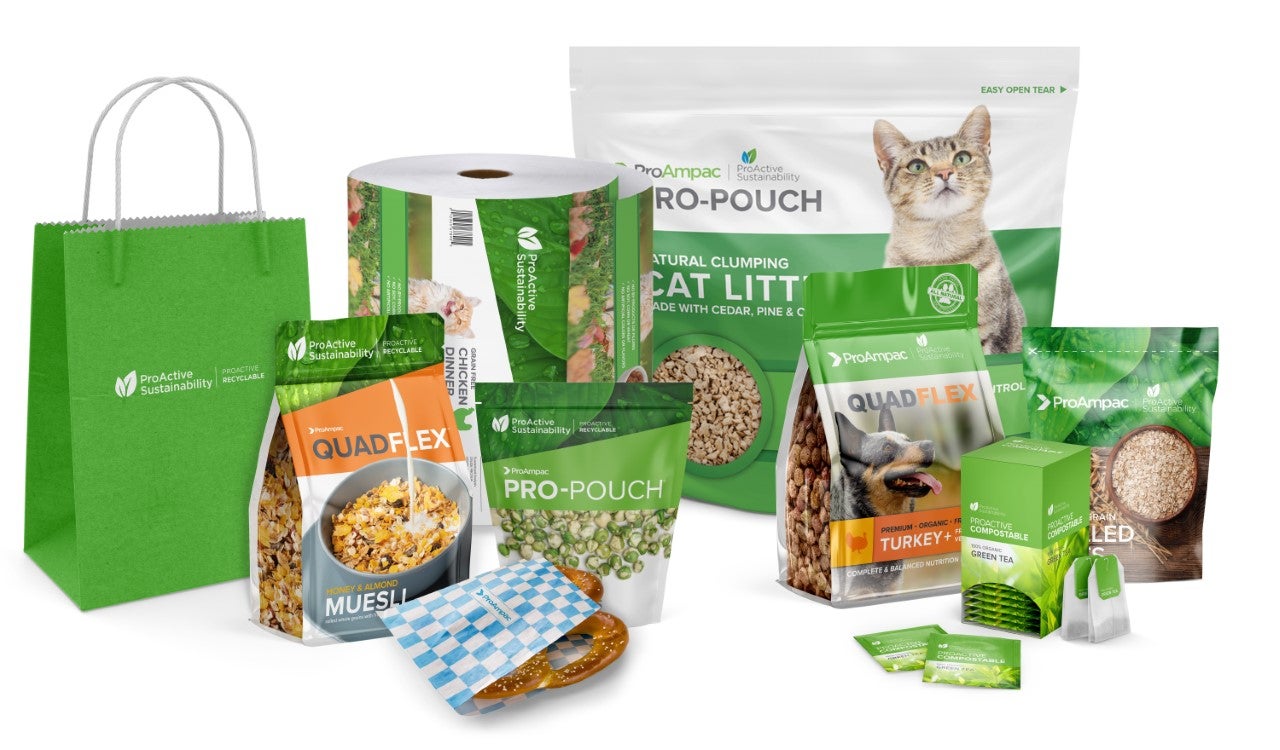
At the start of 2020, data analytics specialist GlobalData named sustainability the “top theme” for the year. This was especially significant for the packaging industry, with businesses and companies working to make their packaging recyclable and eco-friendly in line with sustainability goals.
Packaging Gateway talked with US-based global packaging company ProAmpac market segment manager Nathan Klettlinger to find out whether or not sustainability remained the biggest trend for 2020 amid the Covid-19 coronavirus pandemic, and what 2021 holds for sustainability in the packaging industry.
Jessica Paige: Sustainability was named as the biggest theme of 2020 for the packaging industry, do you think this remains true?
Nathan Klettlinger: Despite hurdles caused by the Covid-19 pandemic, sustainability has been a key main driver for innovation for many large brand owners and retailers. There is significant interest in increasing the sustainability of flexible packaging with a particular focus on recyclability.
Many of our interactions are with companies or co-manufacturers who have made sustainable packaging commitments or who manufacture for retailers who have made these commitments. They are looking for solutions which have a lower environmental footprint while maintaining the shelf life, line speeds, and convenience features of conventional packaging.
JP: What are some other key packaging trends you have noticed this year?
NK: Another trend we continually see is enhanced consumer experience. Innovative packaging designs that are more convenient to use, easy to reclose, and differentiated on the shelf are always in demand by our customers.
Ecommerce is also a growing trend which skyrocketed with the recent pandemic lockdowns. Making packaging more robust, lighter weight and recyclable are the key criteria for ecommerce innovation.
JP: Why has sustainability been so important this year for the packaging industry?
NK: We found that packaging sustainability is important for three main reasons. One is increased consumer awareness and activism regarding the effects of litter and waste on the environment, another is brand owner and retailer commitments to making packaging more sustainable. These commitments are made either independently or with consortiums such as the Ellen MacArthur Foundation New Plastics Economy Global Commitment or regional plastics pacts.
Legislation calling for the reduction of single-use plastics and increasing recycling targets is the third reason. This legislation has been more prominent in Europe and I expect similar legislation may be enacted in the US in coming years.
At the beginning of the pandemic, the operations focus was shifted to keeping the current retail supply chain full as retailers experienced a surge of demand. However, we found that our customers’ packaging engineering and innovation groups took this time to dig deeper into sustainable packaging options and push their projects forward.
I would estimate we have had more sustainability conversations in 2020 versus 2019 even with setbacks due to the pandemic. In addition, many brands and retailers have made 2025 commitments and remain eager to work on solutions to meet those goals.
JP: What has been the biggest challenge for sustainable packaging and how is it being addressed?
NK: One of the biggest challenges for sustainable packaging is understanding which technology fits best with the product type, package format and brand story. ProAmpac is happy to explore a variety of options with customers including a reduction in packaging, recyclable packaging, compostable packaging, packaging with post-consumer content (PCR) or packaging made with renewable bio-based materials.
Another significant challenge is creating sustainable packaging that performs as close as possible to the current packaging type regarding the ability to be formed into pouches/bags and filled, shelf presence, product preservation, and consumer experience. Extensive testing and customer feedback should be done before launching a new product to market.
ProAmpac has a suite of available products that are good replacements for current flexible packaging structures. New technologies are being released frequently in our efforts to replace even more conventional structures with more sustainable packaging.
JP: Will sustainable packaging continue to be a trend in 2021?
NK: It most certainly will continue to be a trend in 2021 as we approach the 2025 sustainable packaging goals that many brands and retailers have committed to. Due to the wide portfolio of packaged products in the market, packaging teams are working now to vet the best technologies, so they meet or exceed their stated goals.
We also see trends in convenience, novel packaging formats, speed-to-market and e-commerce continuing through 2021 and beyond. Packaging, especially flexible packaging, remains a dynamic and innovative industry with a consistent flow of new technologies that reduce environmental footprint, increase brand differentiation, and improve the consumer experience.




